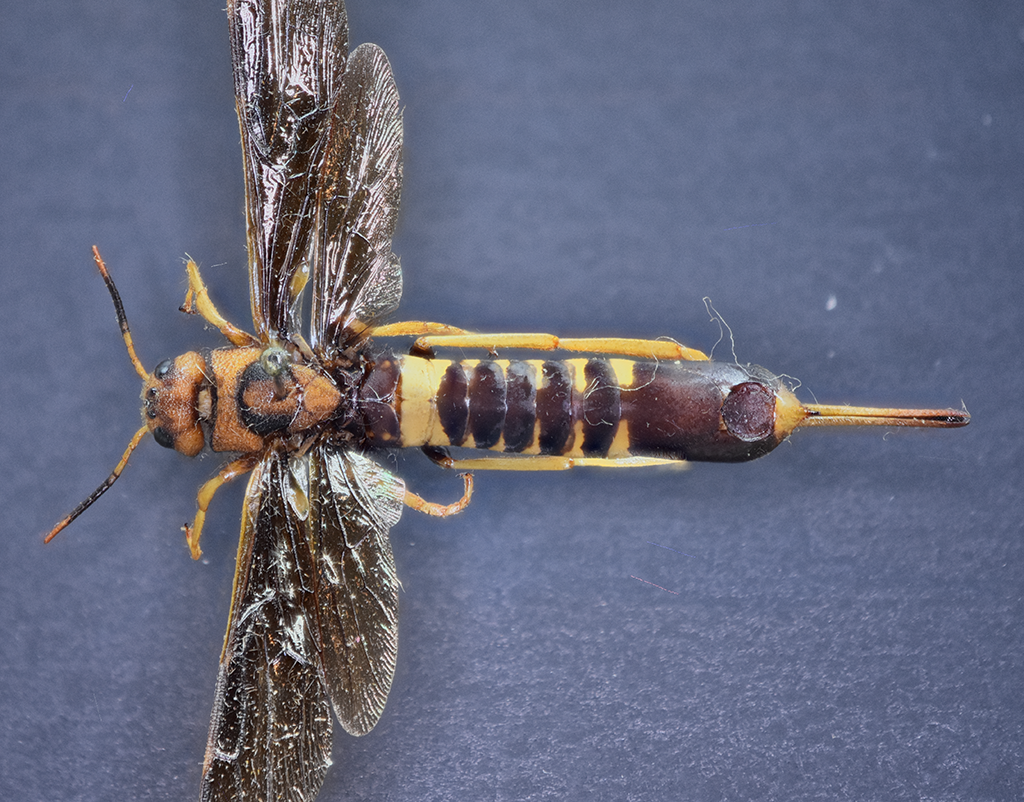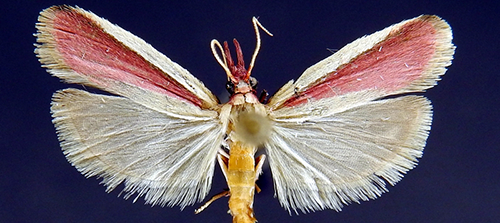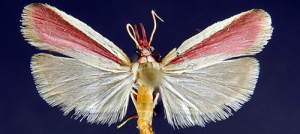For the week of November 18, 2024, we continue examining the insect order Hymenoptera (ants, bees, and wasps). Our focus this week is on Tremex columba (Hymenoptera: Siricidae). This species was described by Linnaeus in 1763. The common name is pigeon horntail. Adult females (larger than males) can be up to 3 cm in length. Females deposit their eggs in dead and dying trees (such as elm and oak). I have often encountered many females ovipositing in dead elm trees. Each female deposit between 2 and 7 eggs per tree. Larvae live in the wood A previously featured insect of the week (Megarhyssa macrurus) is a parasitoid of this species. The specimens you see in these stacked photos were collected by our former member Gordon Adams in the early 1960s in Peoria County (on a dead elm tree). If you are curious, this species does not sting when disturbed by humans (at least I have never been stung).
White rot fungus, Daedalea unicolor, is introduced when eggs are deposited. It appears this fungus is required for successful development of the larvae. Larvae take roughly one year to become full grown. After pupation, it takes about a month for the adult to emerge.



